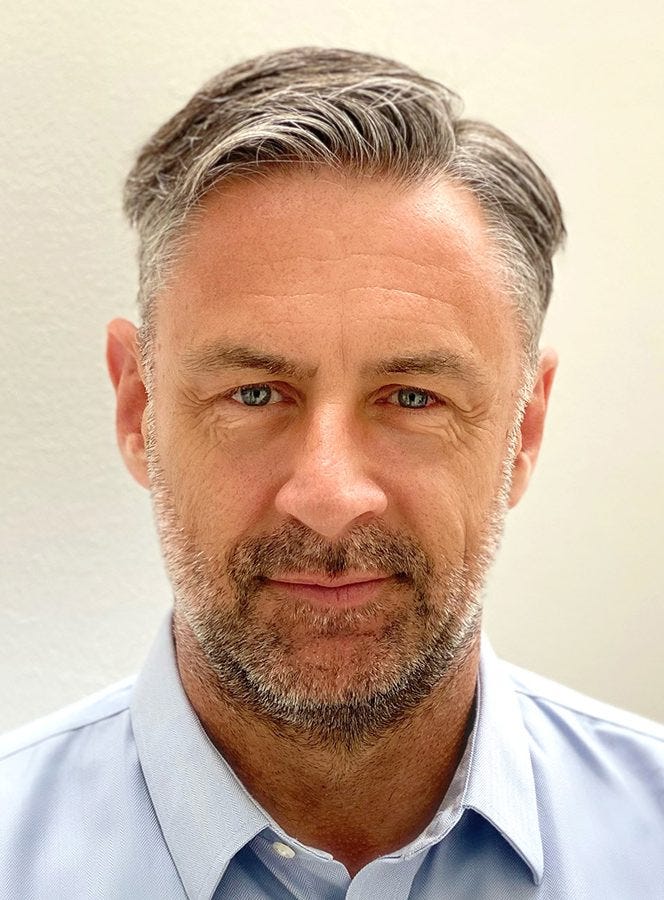Parent company HPE recently announced acquisitions of Athonet and Axis Security in quick succession.

New acquisitions and offerings from Aruba point to wider and more down-market opportunities for partners.
Aruba’s parent company, HPE, enjoyed a busy last month, announcing two acquisitions and its quarterly earnings. The Aruba edge networking division featured heavily in all of those announcements. HPE’s acquisition of mobile core network provider Athonet will ultimately lead to combined use cases with Aruba Wi-Fi offerings, as well as integration with the Aruba Central management platform. Moreover, Aruba executive vice president and general manager Phil Mottram said the recent purchase of Axis Security will lead to a fully integrated secure access service edge (SASE) offering.

Aruba’s Phil Mottram
HPE’s chief financial officer called Aruba’s performance “a standout” in HPE’s latest quarterly earnings. Aruba earned $1.1 billion in revenue last quarter. That grew 25% from the prior year. Operating profit margin increased year-over-year from 17.4% to 21.9%. HPE shares Aruba results as part of if its “Intelligent Edge” portfolio category.
Mottram pointed to different areas of organic and inorganic growth within the Aruba portfolio in a Channel Futures interview. Mottram, who joined Aruba in 2019, said he approached his board a year-and-a-half ago with three areas where he thought the company could expand: data center, private 5G and cybersecurity.
Private 5G
HPE in late February announced the acquisition of Italy-based Athonet. Athonet offers 4G LTE and 5G mobile cores and boasts more than 450 enterprise deployments. HPE executives said at the time that the deal will give customers a chance to buy Wi-Fi and private 5G network services through a single subscription.
Mottram said the private 5G services from Athonet will ultimately integrate with the Aruba Central management platform. He said the his team have debated immediately integrating Athonet on Aruba’s Wi-Fi access points, but decided against that for the time being.
“What we’re looking at is, ‘OK, should we integrate private 5G and Wi-Fi in the same access point?’ If you think about the links in the chain, that would be the most integrated, and I know on day one we will not do that. Because naturally we think there could be interference and other issues associated with doing that. At some point in the future, we may well have that. But I think in the short term, we’re not going to have that,” Mottram said.
Security and SASE
The purchase and subsequent integration of Silver Peak marked Aruba’s entrance into the software-defined wide area networking (SD-WAN) market.
Many analysts have stated that SD-WAN now functions as one component of a larger secure access service edge (SASE) strategy. In that view, customers still demand SD-WAN capabilities, but they also expect next-generation cybersecurity capabilities in their networking platforms. Moreover, many customers prefer to consume SD-WAN and next-gen security on a single cloud-based platform. That idea forms the basis of the term SASE that Gartner has championed.
In response to that trend, HPE has acquired Israeli cybersecurity provider Axis Security. Mottram said the Axis gives HPE and Aruba zero-trust network access (ZTNA), secure web gateway (SWG) and cloud access security broker (CASB) that will slot into their networking portfolio.
“We will blend that into the Aruba, and then we’ll have a full SASE offer,” Mottram told Channel Futures.
Mottram said he estimates that only 10% of customers use …
… integrated SASE platforms. But he said he expects that number to jump closer to 60% three years from now. He also pointed to the tendency of down-market customers using SASE.
“I think you’ll always have a segment of the market that will buy the separate solutions and in particular, those will be the more high-end companies with the ability to integrate, and therefore they might want to take some sort of best-of-breed. They might think one solution is better than the other,” he said. “But I think as soon as you drop out of those top customers into a broader or midmarket at that point, then they’re interested in buying an integrated solution.”
Data Center
Mottram said Aruba is expanding its data center offering. The business unit was already delivering its CX campus switches in data center environments. However, Mottram said Aruba is looking to patch in features for particular data center use cases.
He pointed to partnerships and organic growth that have helped fill gaps. On one hand, John Chambers’ Pensando, which AMD bought last year, is providing Aruba with a top-of-rack switch that enables east-west firewalling. That technology, Mottram said, saves customers money on installing an additional firewall.
On the other hand, Aruba is growing its team on the data center side.
“That we’ve been doing more recently is hiring quite a lot people to build out those capabilities for us,” Mottram said. “You’ll see us being more and more active in the data center space as we grow that business.”
NaaS Expansion
Mottram last December detailed Aruba’s efforts to drive more programmatic network-as-a-service offerings. He said the vendor previously had sold about 30 bespoke NaaS deals to large enterprise customers. However, Mottram said his team wanted to create offerings that would appeal to a broader customer base, including the midmarket. Mottram in December said Aruba had built eight NaaS SKUs that it will rely heavily on partners to sell. He told Channel Futures that three new SKUs are coming to the portfolio.
Mottram said his tenures at telecommunications providers like Vodafone, Telstra and Zayo taught him the strong opportunities that exist with midmarket customers.
“Typically the profitability was better in the midmarket. They’ve got reasonable scale. I’ve always found they’re easier to deal with because they’re more open to buying a standardized product, and that really helps your repeatability and profitability, etc. It’s actually easier to deliver because your teams are used to delivering that,” he told Channel Futures.
Mottram added that he’s seeing customer demand for NaaS differ based on verticals. He noted that construction and oil companies, for example, actually tend to prefer a one-time expenditure.
“For those sorts of companies that build large infrastructure, it’s very easy for them to get hold of capex dollars and less easy to get hold of opex,” he said. “But if you flip back the other way, retail organizations find it very difficult to get hold of capex dollars but find it easy to get hold them opex dollars.”
Want to contact the author directly about this story? Have ideas for a follow-up article? Email James Anderson or connect with him on LinkedIn. |
About the Author(s)
You May Also Like


